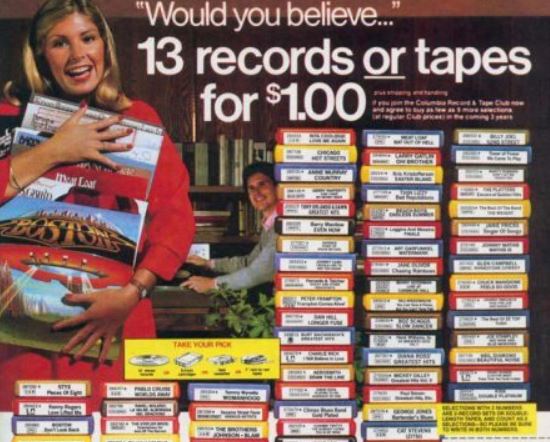Music has recently taken a back seat on longitudes. Most know that my first love is rock music (the good stuff, anyway). For this post, I’m profiling a jazz radio station I just discovered.
First, some quick history:
I’m a baby boomer, so I often struggle with the lightning-speed changes that occur these days, especially technological. In the 1960s, I was a stripling when “Top-40” pop music dominated the AM-radio airwaves. I reached puberty in the 1970s, when FM-radio “free-form” programming gave preference to album cuts over singles.
By 1976, record executives had sunk their largest claws into the music. I watched with dismay as stadium-rock acts like Boston, Foreigner, Journey, Styx, and Pat Benatar assaulted the airwaves, along with my ear canals. Concurrently, promoters were charging ever-higher concert ticket prices, and rock albums became alternately generic-sounding or pretentious. (Like it or not, that’s when Punk Rock sprang into action, which gave way to New Wave and Alternative Rock and beyond.)
Plastic, plastic, take the modern way…
Convenience, everything is clean and easy
—Gentle Giant, “Convenience”
The technology left me equally dizzy. First it was 45 rpm singles, which had replaced 78 rpm records. Then 33 1/3 albums. (We didn’t need the distinction “vinyl” back then.) Then we were conned into buying clunky 8-track tapes for our cars. Cassettes replaced 8-tracks and were a distinct improvement, especially if you collected bootleg Grateful Dead. Then the revolution of compact disks, which claimed to have better sound, convenience, and indestructability. Then MP3s…the format was now invisible!
Now? Invisibility through Bluetooth, I guess, accessible anytime and anywhere you want. But in the whirlwind of convenience and digital blips, something intangible disappeared. That almost personal relationship with the artist and their music became lost. Which, I guess, is why we’re now returning to vinyl.
Anyway, to get to the point: despite the return of vinyl, it’s an incontrovertible fact that most of today’s rock music sucks (“today” for me being anything after the early 1980s). My Toyota Prius agrees with me, since it came equipped with neither a cassette deck nor CD player (despite my dashboard resembling an airplane cockpit). Basically, if I want music while driving, it’s either neatly packaged crap delivered by robots—the occasional public radio station notwithstanding—or the extremely limited options now available on SiriusXM Satellite Radio.
Thankfully, and without having to cross paths with Howard Stern, I discovered a good Sirius station: Real Jazz.
What is “real” jazz, you ask? Who the fuck knows. But I think this label is used to distinguish the music from “Smooth Jazz,” which is more lightweight and poppy and closer to Easy Listening than jazz, and aimed at less-discerning listeners. Smooth Jazz became popular in the 1970s with songs like George Benson’s “Breezin’” and artists like Chuck Mangione. Suddenly, jazz began sounding like TV show theme music. This trend peaked (or bottomed out) in the early 1990s with much-maligned saxophonist Kenny G.
“Real” jazz dates back to the early 1900s. It encompasses Dixieland, Big Band, Swing, Bebop, Hard Bop, Cool Jazz, Modal Jazz, Latin Jazz (including Bossa Nova), Jazz-Funk, Free Jazz, and Jazz Fusion. It’s the kind of music my dad loved (Big Band, Swing, and Bossa Nova) and which I discovered in college, deejay’ed in the ’80s, and still enjoy (Bebop, Hard Bop, Cool, and Modal). All these styles are on Sirius XM, depending on the show, which depends on the day and time.
I’ve been listening to Real Jazz regularly for several weeks now, and unlike rock or Smooth Jazz, I’ve yet to hear the same song twice. Part of this might have to do with the fact that good jazz is improvisational in nature. There are established charts and written arrangements, but these are just blueprints that allow the musicians to “blow,” or exercise their individual creativity.
Rock/pop, on the other hand, discourages studio creativity. Rock has a fan base exponentially larger than jazz, therefore there are more cooks in the kitchen—agents, managers, producers, record execs, broadcast affiliates, lucrative contracts waving in the air—to make sure artists toe the line and keep things musically dumb…and to maximize profits and feed the beast.
There are always exceptions. But you won’t hear them on the radio, unless you occasionally strike gold at the left end of the dial.
Most of the Real Jazz I listen to is on weekdays while tooling around between grocery store, library, and soccer games. I’ve established close personal relationships with hosts Nicole Sweeney and Andromeda Turre (love that name).
Yesterday, while visiting the music store and library with my granddaughter, Rory, I was treated to Bill Evans’s classic “Peace Piece.” If you haven’t heard this understated but lovely solo piano piece, click the digital blip below. Be prepared to wipe a tear.
It’s been said many times, but I’ll say it again: They just don’t make music like this anymore.













































You must be logged in to post a comment.